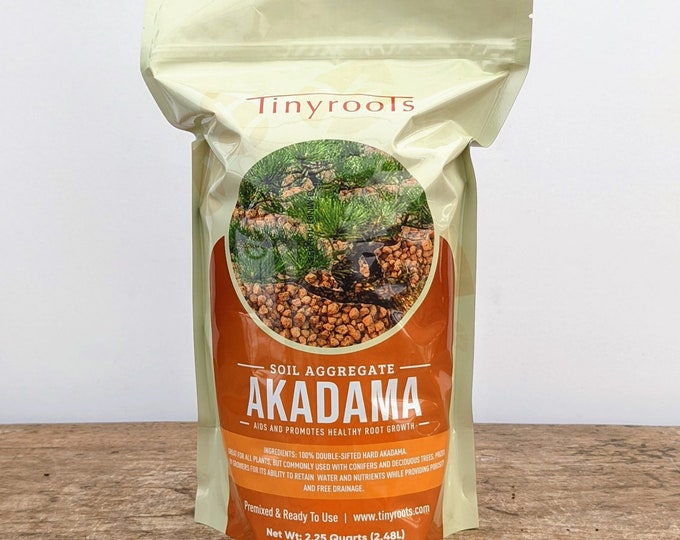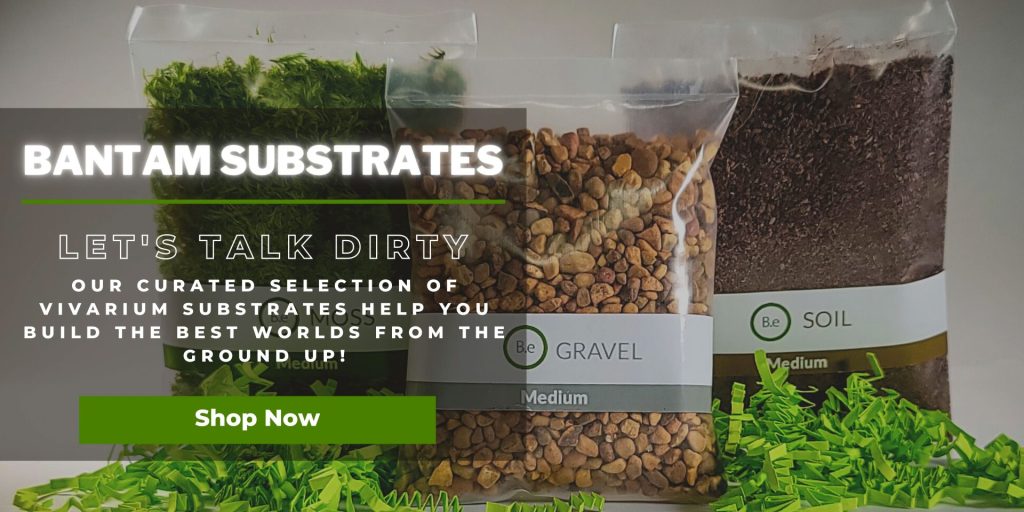Akadama is a special kind of volcanic clay that has been used in horticulture for decades.
Native to Japan, this type of clay offers a wide range of benefits to gardening enthusiasts all over the world.
This red clay has a very unique structure and contains such a high concentration of minerals that it is often referred to as “the king of potting soils”.
In this article, I will discuss what makes this type of clay so special and how to best utilize it in various kinds of vivariums.
| Quick Stats: | |
|---|---|
| Scientific Name | Akadamatsuchi |
| Botanical Name | Akadama |
| Common Names | Japanese Red Clay, Baked Clay, Red Ball Earth |
| Origin | Japan |
| Size | Fine (1-5mm) Medium (5-10mm) Coarse (>10mm) |
| Color | Brick Red |
| PH Impact | Acidic |
| Elemental Type | Volcanic Clay |
Table Of Contents:
ToggleWhat Is Akadama Soil?
Akadama, or Japanese Red Clay, is a special kind of mineral-rich volcanic clay found in parts of Japan.
It is mostly composed of minerals such as iron, magnesium, and potassium as well as many other trace elements.
Although red clay is not as acidic as peat moss, it is slightly acidic and is still able to provide essential nutrients for vivarium plants.
As a result, it has been favored by gardeners for its unique characteristics, for decades.


Akadama Soil Facts
Akadama was first discovered in Japan in the late 1800s and has become increasingly popular for horticultural uses.
It is often referred to as “the king of potting soils” due to its natural combination of minerals and trace elements.
This type of clay has a very unique structure, as it can quickly absorb and release moisture depending on the environmental conditions.
It is also renowned for its buffering properties as it lowers pH levels as well as reduces the salinity of runoff.
Description
This clay has a reddish-brown color and is usually available in three grades.
Fine Akadama is a very fine and powdery substance that is able to retain moisture very well.
This type is especially useful for planting in terrariums.
Coarse Akadama is a little bit more granular than fine and has larger particles.
This type is mostly used for potting orchids and other bryophyte plants.
Baked Akadama is a version of Japanese red clay that has been heated to higher temperatures than the other two types.
This form has a much harder texture and can last a lot longer than the other types.
Habitat
Akadama is found in Japan, typically near the slopes of volcanoes.
Due to its interesting properties, it is often sought after by gardeners who are looking for unique and natural products for their terrariums and other types of vivariums.
Environmental Influence
Unlike many other substrates, Akadama has the ability to buffer pH levels in the enclosure.
This is because minerals, such as iron and magnesium, are able to break down and release more alkaline elements as the substrate begins to break down.
This provides a much more stable environment for vivarium inhabitants, as they can better adjust to minor pH changes.
Also, Akadama can retain more moisture than standard clay and can help keep the substrate moist for longer.
Vivarium Type
Akadama can be used in a variety of vivariums but is especially useful in terrariums with bonsai trees, cacti, and succulents.
This substrate is often used as a soil amendment in these types of enclosures, as it is able to retain moisture and buffer pH levels.
Additionally, orchids and bryophytes are especially suited for Akadama as a soil amendment, as their unique structure is able to support their delicate root systems.
- Paludariums – Half aquatic/ half terrain-based enclosure.
- Terrariums – Fully terrain-based enclosures with little to no aquatic features.
- Aquariums – Fully aquatic-based enclosures with little to no terrain features.
Vivarium Usage
When using Akadama in vivariums, it is best used as a soil amendment.
This can be done by mixing Akadama with standard terrarium soil, as it will help retain extra moisture and buffer pH levels.
Akadama should make up no more than one-quarter to one-third of the total substrate mix, as it can become too saturated if used in large amounts.
What’s more, this terrarium clay can be used as a standalone substrate in larger enclosures, as it is able to retain well and buffer pH over time.
Advantages
One of the main advantages of using Akadama is its unique structure.
It is able to absorb and release moisture depending on the conditions of the vivarium.
This makes it perfect for most vivariums, as it can provide the perfect amount of moisture for the inhabitant’s needs.
Furthermore, Akadama is able to buffer pH levels in the enclosure, making it a great soil amendment for plants that prefer more alkaline conditions.
Disadvantages
One possible disadvantage of Akadama is its relatively high cost.
This is due to the rarity of the material and the fact that it is mostly found in Japan.
On top of that, if too much of it is used, it can become too saturated and will need to be replaced more often.
Buy Akadama Soil
When purchasing Akadama, it is important to buy from reliable sources.
Many companies are known for providing quality red clay from Japan and are transparent about their sourcing practices.
This powerful soil aggregate can be found for purchase in the image below:


Akadama Soil Preparation & Tips
When using Akadama for terrariums, it is important to properly prepare the material.
It should be washed before use, as it may contain dirt, dust, or other materials that are not helpful for the inhabitants.
In addition, the clay should be stored in a dry area, as moisture can cause it to become too saturated and lose its beneficial properties.
Akadama Soil Substitutes
If Akadama is not suitable for your particular vivarium, there are some other substrates that may be more suitable.
Some of these alternatives include pumice, expanded clay, and calcined clay.
Pumice is another type of volcanic soil that can provide aeration and moisture retention.
Expanded clay is similar to Akadama, but is able to support much heavier plants and animals.
Lastly, calcined clay is a type of clay that is able to retain moisture and provide air pockets for beneficial microbes.
Conclusion
Akadama is an amazing substrate for a variety of vivariums because of its unique properties.
It is able to retain water, buffer pH levels, and support delicate root systems.
Although the price can be a bit steep, it’s a worthwhile investment for anyone looking to create a truly unique and natural environment for their miniature ecosystem.
Frequently Asked Questions
Yes, Akadama can be used in aquariums. It is a Japanese clay and is designed to help create a natural environment for aquarium plants and fish. Akadama absorbs water and releases it gradually, improving the quality of water in the aquarium. It also helps to maintain a good balance of minerals and natural acids, which helps promote the health of aquarium fish.
Yes, Akadama potting soil does, in fact, contain essential nutrients for your plants. The soil contains micronutrients like calcium, magnesium, manganese, and iron as well as macronutrients such as phosphorus, nitrogen, and potassium.
Akadama soil also has high porosity and water retention, making it an excellent growing medium for your plants.
No, Akadama and pumice are two different types of soil amendment. Akadama is a red clay–like material found in Japan, while pumice is a light, porous volcanic rock formed when hot lava comes in contact with water.
Akadama soil is a soil amendment made from a clay–like material native to Japan. It is composed of roughly 40 percent mullite clay and 60 percent minerals, including quartz and kaolinite. Akadama improves drainage and aeration, increases water and nutrient retention and provides optimal pH levels for a wide variety of plants.





